Read more on Stroke
Optimal stroke recovery with hyperbaric oxygen therapy
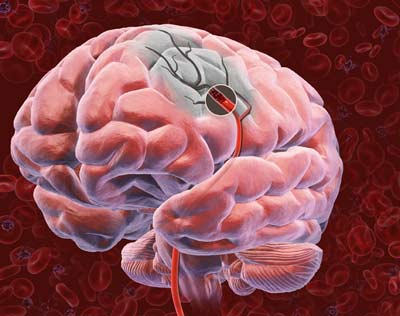 Stroke occurs when there is an interruption in blood flow to the brain due to blockage (ischemic stroke) or rupture of blood vessels (hemorrhagic stroke). As a result, affected brain cells are deprived of oxygen and subsequently die if perfusion is not re-established within a reasonably short period of time. Intact but marginally perfused brain cells (called ischemic penumbra) surrounding the central area of dead cells (called umbra) enter a dormant state, amplifying the functional impairments from the stroke. Hyperbaric oxygen therapy decreases brain swelling and provides continuous oxygen stimulus to awaken the dormant nerve cells. These result in increased brain activity, effectively limiting the extent of functional (i.e. motor, sensory, and cognitive) impairment during the acute stage of stroke. Subsequently, hyperbaric oxygen therapy induces neural stem cell growth and differentiation (neurogenesis) and stimulates rewiring of neural pathways (neuroplasticity), effectively promoting recovery of overall function even years after a stroke.
Stroke occurs when there is an interruption in blood flow to the brain due to blockage (ischemic stroke) or rupture of blood vessels (hemorrhagic stroke). As a result, affected brain cells are deprived of oxygen and subsequently die if perfusion is not re-established within a reasonably short period of time. Intact but marginally perfused brain cells (called ischemic penumbra) surrounding the central area of dead cells (called umbra) enter a dormant state, amplifying the functional impairments from the stroke. Hyperbaric oxygen therapy decreases brain swelling and provides continuous oxygen stimulus to awaken the dormant nerve cells. These result in increased brain activity, effectively limiting the extent of functional (i.e. motor, sensory, and cognitive) impairment during the acute stage of stroke. Subsequently, hyperbaric oxygen therapy induces neural stem cell growth and differentiation (neurogenesis) and stimulates rewiring of neural pathways (neuroplasticity), effectively promoting recovery of overall function even years after a stroke.
Stroke recovery occurs in phases. The acute phase, starting immediately up to a week after the stroke, is characterized by cell death, brain swelling, and deactivation of poorly-oxygenated brain cells surrounding the dead core. Preservation of the viability and subsequent reactivation of these dormant cells are of utmost importance during this stage. This is followed by the subacute phase which lasts up to three months after the stroke. During this time, brain swelling and inflammation gradually subsides. This phase is generally considered the period of greatest functional recovery. Three months after the stroke, recovery enters the chronic phase. This is when the brain rewires itself if provided with proper stimulation, giving rise to slow yet significant functional gains.
In all phases of recovery, hyperbaric oxygen therapy can play a significant role in neurorehabilitation and maximize the capacity for functional recovery. It can preserve the viability of the cells in the ischemic penumbra during the acute phase, hasten edema resolution and washout of inflammatory cytotoxins during the subacute phase, and promote neuroplasticity during the chronic phase. Throughout the recovery process, hyperbaric oxygen therapy stimulates neurogenesis. In addition to aiding functional recovery, hyperbaric oxygen therapy can also protect against subsequent strokes (neuroprotection).
Similar to other therapies (e.g. physical therapy) used in stroke rehabilitation, hyperbaric oxygen therapy requires commitment and dedication from the client in order to reap its full benefits. For majority of stroke cases, between 40 to 60 hyperbaric sessions are required to maximize its therapeutic potential. However, a number of cases show remarkable improvement within the first few therapy sessions.
Facts:
The manifestations of stroke are myriad and dependent on the location of the injury. These include one-sided weakness or paralysis, stiffness or spasticity of the affected limb, abnormal sensation, poor motor coordination, movement and gait deviations, poor balance, visual disturbance, speech and swallowing difficulty, bowel and bladder dysfunction, and cognitive impairment such as memory loss, behavioural changes, difficulty planning, and depression.
Statistics:
- 50,000 strokes occur in Canada every year – equivalent to 1 stroke every 10 minutes.
- 3.6 billion Canadian dollars are spent yearly in physician services, hospital costs, lost wages, and decreased productivity.
- Every year people with stroke spend > 639,000 days in acute care in Canadian hospitals, and 4.5 million days in residential care facilities. This is considerable burden to the health care system and families of stroke survivors
- Maximum length of stay in rehabilitation hospital is 35 days (average is 8.6 days) and a staggering 60% of people who have a stroke report that they need help afterwards
- More than 400,000 Canadians are living with long-term stroke disability
Benefits of hyperbaric oxygen therapy in Stroke Recovery
- During the acute and subacute phase (immediately after stroke to 3 months after stroke)
- Prevents further brain damage and cell death by delivering oxygen to poorly oxygenated but intact brain cells
- Establishes microcirculation and collateral circulation to improve oxygen delivery to the affected brain area
- Decreases brain swelling and inflammation, both of which inhibit brain cell regeneration (neurogenesis)
- During the subacute and chronic phase (1 week to years after stroke)
- Improves strength, mobility, sensation, coordination, balance, speech, and bowel and bladder control by inducing neurogenesis
- Promotes proliferation, differentiation, and migration of neural stem cells, activating neuroplasticity even at chronic late stages of stroke
- Improves memory by modulating brain metabolism
- Improves post-stroke depression by decreasing serum cytokine levels, effectively countering the negative effects of post-stroke depression on functional recovery
- Augments physical therapy and occupational therapy by increasing exercise capacity
- Protects against stroke reoccurrences
Read more on Stroke
Further reading:
- Yan D, Shan J, Ze Y, Xiao-Yan Z, Xiao-Hua H. 2015. The effects of combined hyperbaric oxygen therapy on patients with post stroke depression. J Phys Ther Sci. 2015 May; 27 (5): 1295-7.
- Ding Z, Tong WC, Ly XX, Peng HP. 2014. Hyperbaric oxygen therapy in acute ischemic stroke: a review. Interv Neurol. 2014 Aug;2(4):201-11
- Boussi-Gross R, Golan H, Volkov O, Bechor Y, Hoofien D, Beeri MS, Ben-Jacob E, Efrati S. Improvement of memeory impairments in poststorke patients by hyperbaric oxygen therapy. Neuropsychology. 2015 Jul;29(4):610-21
- Cao H, Ju K, Zhong L, Meng T. Efficacy of hyperbaric oxygen treatment for depression in the convalescent stage following cerebral hemorrhage. Exp Ther Med. 2013 Jun;5(6): 1609-1612
- Efrati S, Fishlev G, Bechor Y, Volkov O, Bergan J, Kliakhandler K, Kamiager I, Gal N, Friedman M, Ben-Jacob E, Golan H. Hyperbaric oxygen induces late neuroplasticity in post stroke patient--randomized, prospective trial. PLoS One. 2013:8(1):e53716
- Sanchez EC. Mechanisms of action of hyperbaric oxygenation in stroke: a review. Crit Care Nurs Q. 2013 Jul-Sep;36(3):290-8.
- Chen CH, Chen SY, Wang V, Chen CC, Wang KC, Chen CH, Liu YC, Lu KC, Yip PK, Ma WY, Liu CC. Effects of repetitive hyperbaric oxygen treatment in patients with acute cerebral infraction: a pilot study. Scientific World Journal. 2012;2012:694703
- Cummins FJ jr, Gentene LJ. Hyperbaric oxygen effect on MMP-9 after a vascular insult. J Cardiovas Transl Res. 2010 Dec;3(6):683-7
- Matchett GA, Martin RD, Zhang JH. Hyperbaric oxygen therapy and cerebral ischemia. Neurol Res. 2009 Mar;31(2)
- You ZJ, Li CY.The effects of hyperbaric oxygenation therapy on serum cytokines and depression in post-stroke depression.Chinese Journal of Physical Medicine and Rehabilitaioin 2009;31(10):667-670
- Villa JF, Balcarce PE, Abiusi GR, Dominguez RO, Pisarello JB. Improvement in motor and cognitive impairment after hyperbaric oxygen therapy in a selected group of patients with cerebrovascular disease: a prospective single-blind controlled trial. Undersa HYperb Med. 2005 Sep-Oct;32(5):341-9.
- Neubauer RR: Hyperbaric Oxygenation in acute stroke- 4 hour window, EUBS, 26th Annual meeting, Malta, Sep 14-18, pp:43-4650, 2000.
- Neubauer RR: World Federation of Neurology proposed pilot study of hyperbaric treatment of acute ischemic thrombotic stroke , EUBS, 25th Annual meeting, Haifaand Eilat, Israel, Aug 28 -Sep 2, pp:48-51, 1999.
- Jain K: Textbook of Hyperbaric Medicine, 2nd ed. Hogrefe and Huber Publishers, Inc., 1996, Chap. 17: Role of hyperbaric oxygenation in management of stroke, Chap. 19: Hyperbaric oxygen therapy in neurosurgery.
- Veltkamp R, Toole JF: Hyperbaric oxygen-a neuroprotective adjuvant for hyperacute ischemic stroke J Neurol Sci, Sep, 1; 150(1):1-2, 1997.
- Li W: Cerebral thrombosis treated by hyperbaric oxygenation, 9th International Congress on Hyperbaric Medicine, Sydney, Australia, March 1-4, pp 153-154, 1987.
- Steenblock D. Hyperbaric Oxygen for treatment of stroke and traumatic brain injuries. 1998 July.
- Steenblock D: Review of Hyperbaric Oxygen for Stroke Rehabilitation, Explore, Volume 7, Number 5, 1996/97.
- Nighoghossian N, Trouillas P, Adeleine P, Salord F. Hyperbaric Oxygen in the treatment of acute ischemic stroke; a double blind pilot study. 1995 Stroke. 26:1369-72
- Marroni A: Hyperbaric oxygen therapy at 1.5 or 2.0 ATA as an adjunct to the rehabilitation of stabilized stroke patients. A controlled study, 9th International Congress on Hyperbaric Medicine, Sydney, Australia: March 1-4, pp: 161-167, 1987.
- Akimov GA et al: Assessment of the efficiency of hyperbaric oxygen therapy in early forms of cerebrovascular disorders, Neurosci Behav Phys, 15:13-16, 1985.
- Sukoff MH, Ragatz RE: Hyperbaric oxygenation for the Treatment of Acute Cerebral Edema, Neurosurgery, 10:29-38, 1982
- Neubauer RR, End E. Hyperbaric Oxygenation as an adjunct therapy in strokes due to thrombosis. 1980.Stroke Vol11(3). [PDF]
Back to:
Margaret L - Maple Ridge, BC
Amazing story on stroke recovery. This brought us all to tears, - Happy tears :-)
D W S, Williams Lake, BC
"... The oxygen therapy has been very beneficial to me. I'm walking at least 80% better + I have a lot more energy, just after 9 sessions."
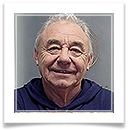 Joseph K,
Joseph K,
World traveler
Burnaby
"I am amazed with my improvements after a mini stroke - it feels like a miracle. After 8 oxygen treatments I started playing my saxophone again. I feel rejuvenated and I am sharing my great experience with all my friends."
Vancouver General Hospital is recruiting stroke patients for a study on "The Effects of Hyperbaric Oxygen in Patients 6 to 36 Months Post Ischemic Stroke" - Read More
 Stroke Recovery
Stroke Recovery
Doug S. - Coquitlam
“Just a few months ago I had a stroke and was in a hospital. I couldn’t talk and use my right arm and was in a wheelchair, not improving much. My doctor suggested oxygen therapy.
After 35 sessions I am back to work now playing my instrument professionally.
Could not be more grateful! And I am telling everyone.”
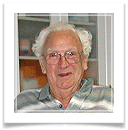 Stroke Recovery
Stroke Recovery
John C - Pitt Meadows
"Oxygen helped me tremendously in recovery from my stroke..."
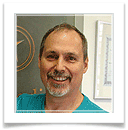 Stroke Recovery
Stroke Recovery
Willard O - North Vancouver
"... feel better than before my stroke."
 Stroke recovery
Stroke recovery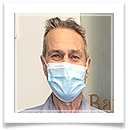 Stroke recovery
Stroke recovery
